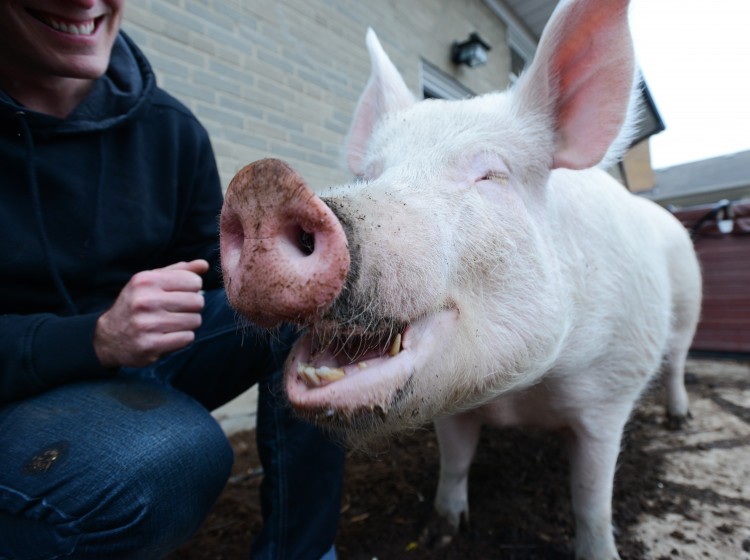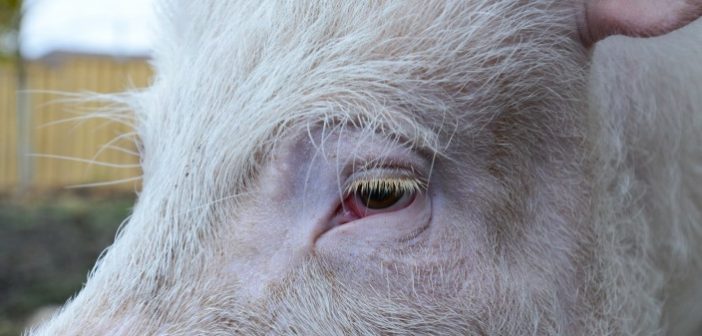When I was doing research for my novel Animalia, I had the opportunity to visit several pig farms, although it wasn’t easy to gain access to them. In France, 95% of pigs are born and raised behind the walls of intensive farms, but the industry has hidden the reality of that production from consumers. It took me months to find a way to get in, and what I saw changed me forever. I’ve seen hundreds of animals kept in darkness, in small enclosures, living on concrete floors covered with excrement, their bodies soiled, scratched, and bitten. I’ve seen their eyes wide open with fear. I’ve seen sows dragging hernias on the floor, young pigs dying, and corpses rotting, some of them torn open before being carried and abandoned in a corridor, waiting for the rendering.
Some would say I had bad luck and went to the wrong farms. How many times have I heard that “not all farms are like that”? But statistics prove otherwise. Mortality rates in pig farming—before a pig is sent for slaughter—are estimated at 20%. At each step of production, animals die or are killed: from birth, when the weakest piglets are slammed against a wall or a metal bar, to the end of their short lives, when the least profitable or the most damaged animals, called downers, are simply killed with a pick or hit in the skull with a sledgehammer, because they wouldn’t even yield a profit at the slaughterhouse.

Each year, more than 123 million pigs are killed in slaughterhouses in the United States. 1 million die during transportation and, according to People for the Ethical Treatment of Animals (PETA), 10% “are so ill or injured that they are unable to stand and walk on their own.” Like the others, they will be stunned with a stun gun, administered electric shocks, or suffocated in high-pressure chambers full of carbon dioxide. They struggle, scream, and convulse during the long minutes before their throats are slit. Many are still conscious at this time. They die after 180 days, a short life of suffering and
want.
Many recent studies have demonstrated pigs’ sensitivity, intelligence, and complexity of social behavior. As Doctor Lori Marino, neurobiologist at the University of Atlanta said, “We have shown that pigs share a number of cognitive capacities with other highly intelligent species such as dogs, chimpanzees, elephants, dolphins, and even humans. There is good scientific evidence to suggest we need to rethink our overall relationship to them.”

We should not value the interests of a living being on the basis of their intelligence and ability to suffer. However, those studies and the ethology research that has been done over the past ten years should open our eyes to the complexity of animal cognition and lead us to see pigs and all animals bred for meat in a different way: not just as food and protein sources, but as individuals able to suffer and feel complex emotions. In the light of this knowledge, how can we keep exploiting with impunity those millions of animals born and condemned by the meat industry to a systematic and structural hell, if not by choosing to be blind to reason?
The pig industry is one of the most violent types of farming and the expression of the most cynical version of capitalism that considers living beings as objects for profit, disregarding their essential needs and desires. We should see a piggery as a mirror turned back on our society and humanity. The time has come to face it.

Featured image: the eye of Esther the Wonder Pig, internet star and pig ambassador. Image credit Jo-Anne McArthur / We Animals.





